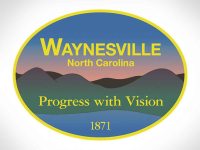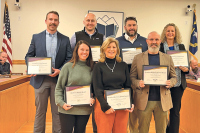New standards to shine light on WNC air quality
New federal standards for ozone will be issued by year’s end, and the verdict will determine whether Western North Carolina is out of compliance with air quality.
Western North Carolina likely can’t fix its air quality problem alone. Charlotte, Knoxville and Atlanta are all out of compliance under current ozone limits, let alone the more rigorous ones that are pending. Smog is carried from these metropolitan areas into the mountains.
In addition, antiquated, dirty coal plants operated by Tennessee Valley Authority from Ohio to Tennessee to Alabama send pollution this way.
“Is there enough we could do in North Carolina to achieve the standards?” asked Paul Muller, regional supervisor for the N.C. Division of Air Quality in Asheville.
Probably not, he said. But since WNC won’t be alone in its violation of ozone standards, a multi-state approach will be inevitable.
“Knoxville has a problem. Atlanta has a problem. So they are going to have to be making reductions as well,” Muller said.
Related Items
Ozone levels have declined over the past decade, proving that tailpipe regulations and new emissions standards gradually being imposed on coal plants can work, according to Muller.
“How do we keep getting cleaner so we can meet the tighter standards?” Muller said. “In a lot of ways we depend on the federal government to put in reduction programs that will affect a larger area.”
But attempts to impose tougher pollution limits on coal plants have met resistance in court. The benefits that would otherwise be realized by new regulations are taking longer, Muller said.
While it is easy to point fingers at dirty coal plants or wafting smog from urban centers, it will ultimately take everyone working together to improve air quality — including steps by everyone living in the region.
“Air quality is impacting our health our environment and our economy,” said Bill Eaker, environmental specialist with Land of the Sky Regional Council. “We are going to have to take action to reduce energy consumption and reduce fuel use for our cars and vehicles.”
Ozone, which is the main ingredient in smog, is worse in the summer. The Land of the Sky Regional Council hosted an ozone season press conference last week, as it does every year at the outset of the ozone season. Speakers at the event educate the press on the latest air pollution rules, tout success stories and share various initiatives underway throughout the region to improve air quality.
Limit in flux
An ozone standard is set by the Environmental Protection Agency every five years. New limits came out in 2008, but have been in flux ever since, due both to lawsuits and a shift in policy from the Bush to Obama administration.
When reviewing the ozone standard, the EPA relies on a panel of scientists to recommend a safe limit both for human health and the environment. But in 2008, the EPA bucked the scientists and instead settled on a slightly laxer number.
“This was a big deal because EPA usually takes the advice of its science committee,” according to Vicki Sandiford, an air quality specialist with the EPA in Raleigh. “The law requires EPA to explain in a rational way why it chose not to follow the recommendation of its science advisers.”
Apparently, the explanation was lacking, since lawsuits by environmental groups promptly followed. The scientists on the panel even weighed in expressing anger that their advice was not followed.
When Obama took office, he appointed a new EPA director, and a policy shift followed suit.
“It is the goal of this administration to have science in the forefront of the regulations it considers,” Sandiford said.
So it was back to the drawing board. The new ozone standards will be announced by August (see box).
There are 1,200 ozone monitors in the United States, mostly in urban areas. The EPA wants to see 270 new monitors installed throughout the country.
With many areas in violation of the old ozone limits, it is unclear how quickly even tougher limits will be complied with. Charlotte has been in violation of federal ozone standards since 1997. Why such a long leash to meet the standards?
“Partly because of the difficulty for many areas in meeting the standard,” Sandiford said. “They want to give area time to put programs in place and see the results it keeps it from being so burdensome.”
Ozone forecast
To get your ozone forecast, go to ncair.org. Click on “air quality forecast.”













